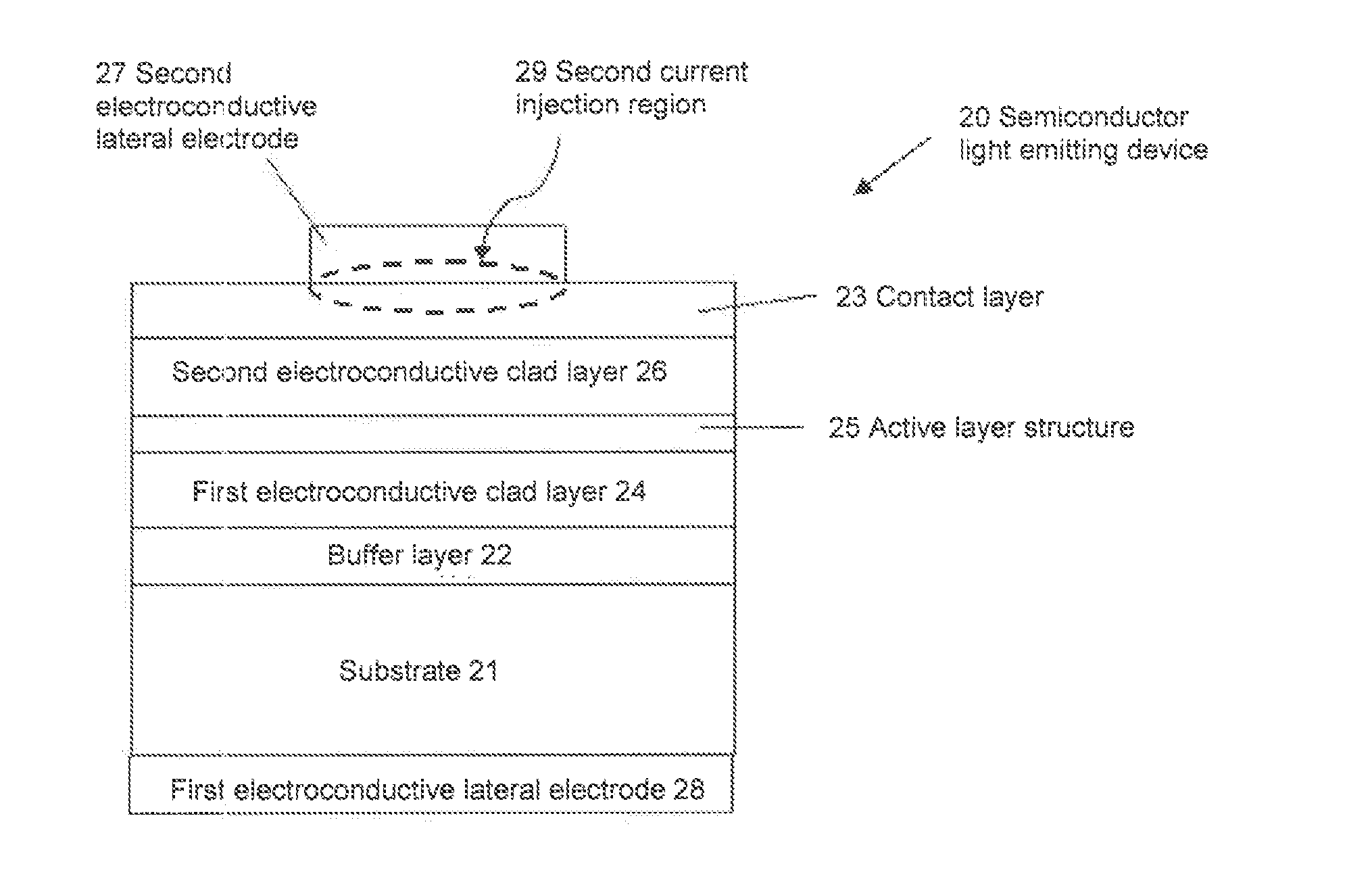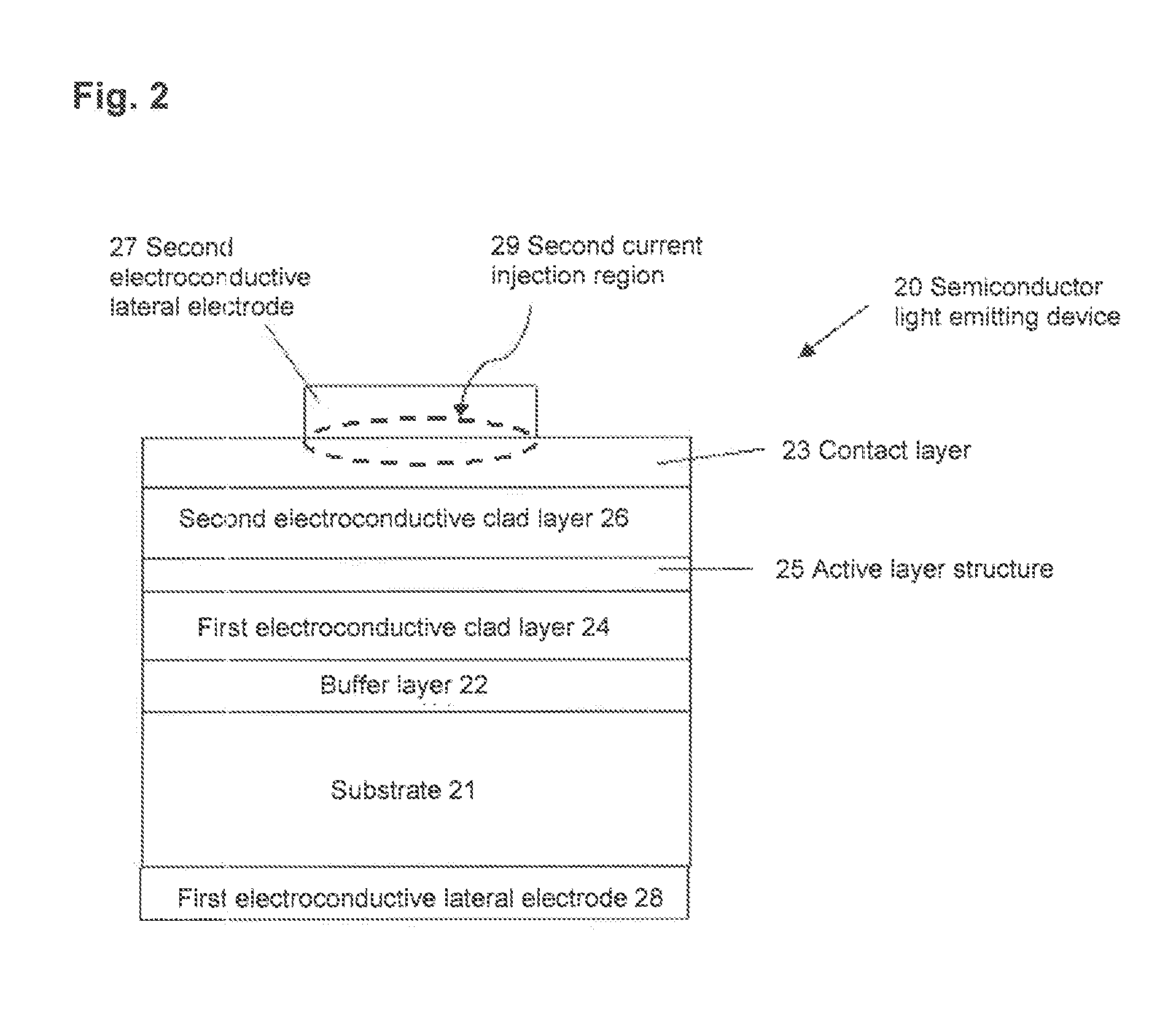Semiconductor light emitting device, backlight, color image display device and phosphor to be used for them
a technology of semiconductors and light emitting devices, which is applied in the direction of luminescence, lighting and heating apparatus, instruments, etc., can solve the problems of high gamut, low ntsc ratio, and difficult to obtain a display with high color reproducibility, etc., to achieve excellent luminance and emission efficiency, wide color reproducibility, and high durability
- Summary
- Abstract
- Description
- Claims
- Application Information
AI Technical Summary
Benefits of technology
Problems solved by technology
Method used
Image
Examples
embodiment (
(3-4-3) Embodiment (c)
[0469]With respect to a light emitting device having the above-mentioned structure (c), one embodiment is shown in FIG. 24 to describe it specifically.
[0470]In FIG. 24, the circumference of a material layer B (111) which is a fluoride complex phosphor-containing layer, is covered by a material layer E (114) which is a layer of a material not containing a fluoride complex phosphor.
[0471]The material to constitute the material layer E is particularly preferably one not having groups reactive with the fluoride complex phosphor, and it may, for example, be a fluorinated saturated or unsaturated hydrocarbon resin or a silicone resin.
[0472]The weight average molecular weight of the resin to constitute the material layer E as measured by a GPC method may, for example, be the same one as the molecular weight of the resin to constitute the above-mentioned material layers C and D.
[0473]Further, the thickness of the above material layer D may depend also on the size of th...
examples
[0636]Now, the present invention will be described in further detail with reference to Examples, but it should be understood that the present invention is by no means restricted to the following Examples.
Group I of Examples
Production of Light Emitting Device and Color Image Display Device
[0637]In the following Examples, “parts” means “parts by weight”.
(1) Preparation of Phosphors
(1-1) Preparation Example 1: Red Emitting Phosphor K2Tif6:Mn (Hereinafter Sometimes Referred to Also as “KTF”)
[0638]So that the feedstock composition for a phosphor would be K2 Ti0.95 Mn0.05 F6, as raw material compounds, K2 TiF6 (4.743 g) and K2 MnF6 (0.2596 g) were slowly added and dissolved in 40 ml of hydrofluoric acid (47.3 wt %) with stirring under atmospheric pressure at room temperature. After the respective raw material compounds were all dissolved, 60 ml of acetone was added at a rate of 240 ml / hr while stirring the solution to let a phosphor precipitate in the poor solvent. The obtained phosphor w...
preparation example ii-1
[0751]K2MnF6 can be obtained by the following reaction formula.
[0752]That is, KF powder or KHF2 powder was dissolved in hydrofluoric acid (47.3 wt %) and then KMnO4 powder was put into this solution and dissolved. While stirring the solution, an aqueous hydrogen peroxide solution was dropwise added, whereby a yellow precipitate was obtained when the molar ratio of KMnO4 to H2O2 became 1.5. The precipitate was washed with acetone and dried at 130° C. for one hour to obtain K2MnF6. In the following Examples and Comparative Examples, K2MnF6 prepared as described above, was used.
Examples and Comparative Examples for Preparation of Phosphor (K2Mnf6:Mn)
PUM
| Property | Measurement | Unit |
|---|---|---|
| Temperature | aaaaa | aaaaa |
| Temperature | aaaaa | aaaaa |
| Temperature | aaaaa | aaaaa |
Abstract
Description
Claims
Application Information
 Login to View More
Login to View More - R&D
- Intellectual Property
- Life Sciences
- Materials
- Tech Scout
- Unparalleled Data Quality
- Higher Quality Content
- 60% Fewer Hallucinations
Browse by: Latest US Patents, China's latest patents, Technical Efficacy Thesaurus, Application Domain, Technology Topic, Popular Technical Reports.
© 2025 PatSnap. All rights reserved.Legal|Privacy policy|Modern Slavery Act Transparency Statement|Sitemap|About US| Contact US: help@patsnap.com



